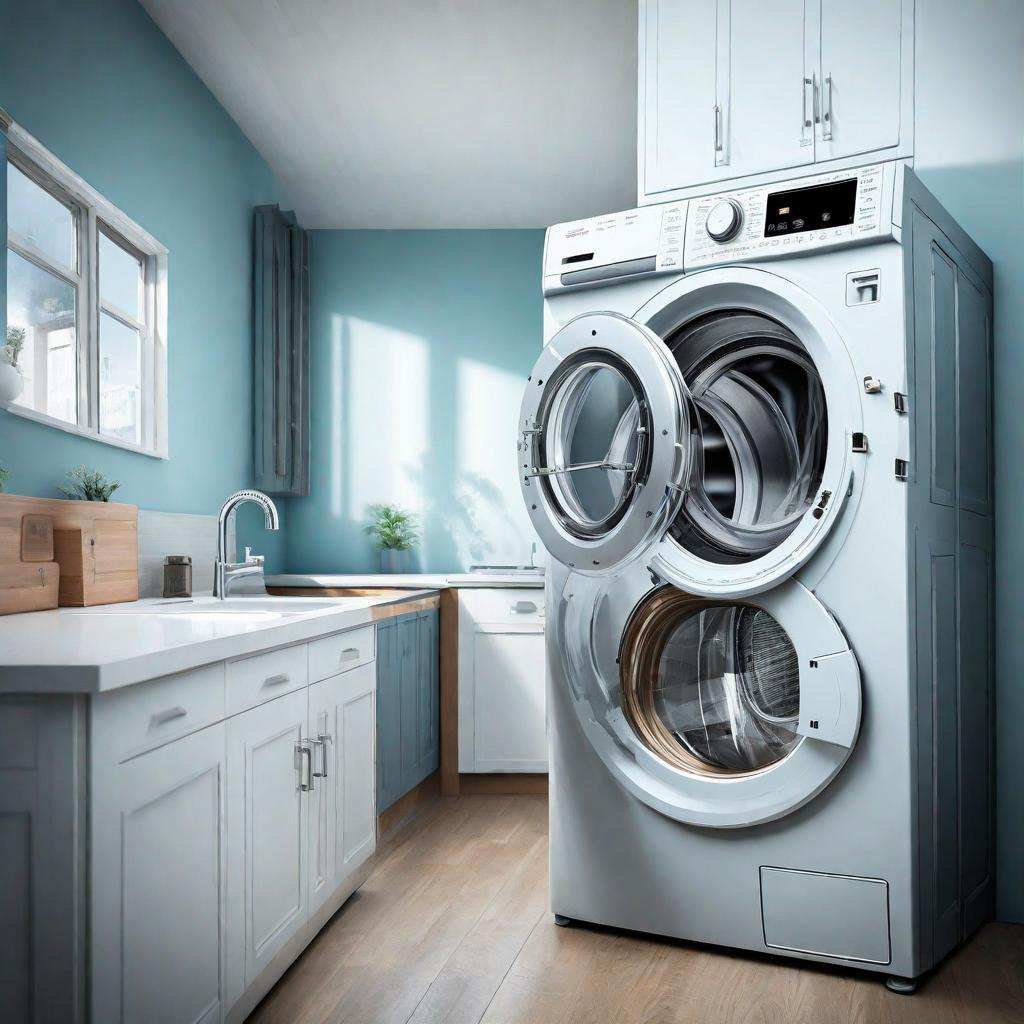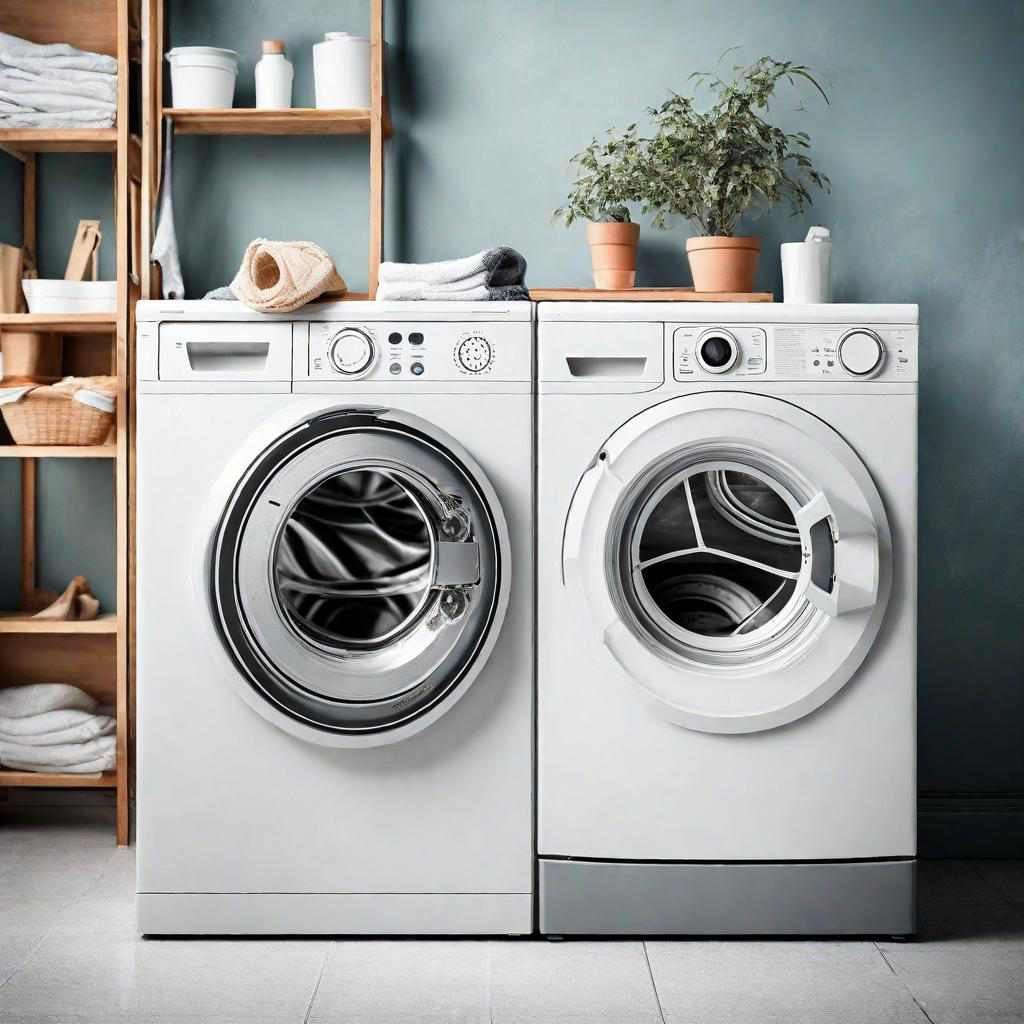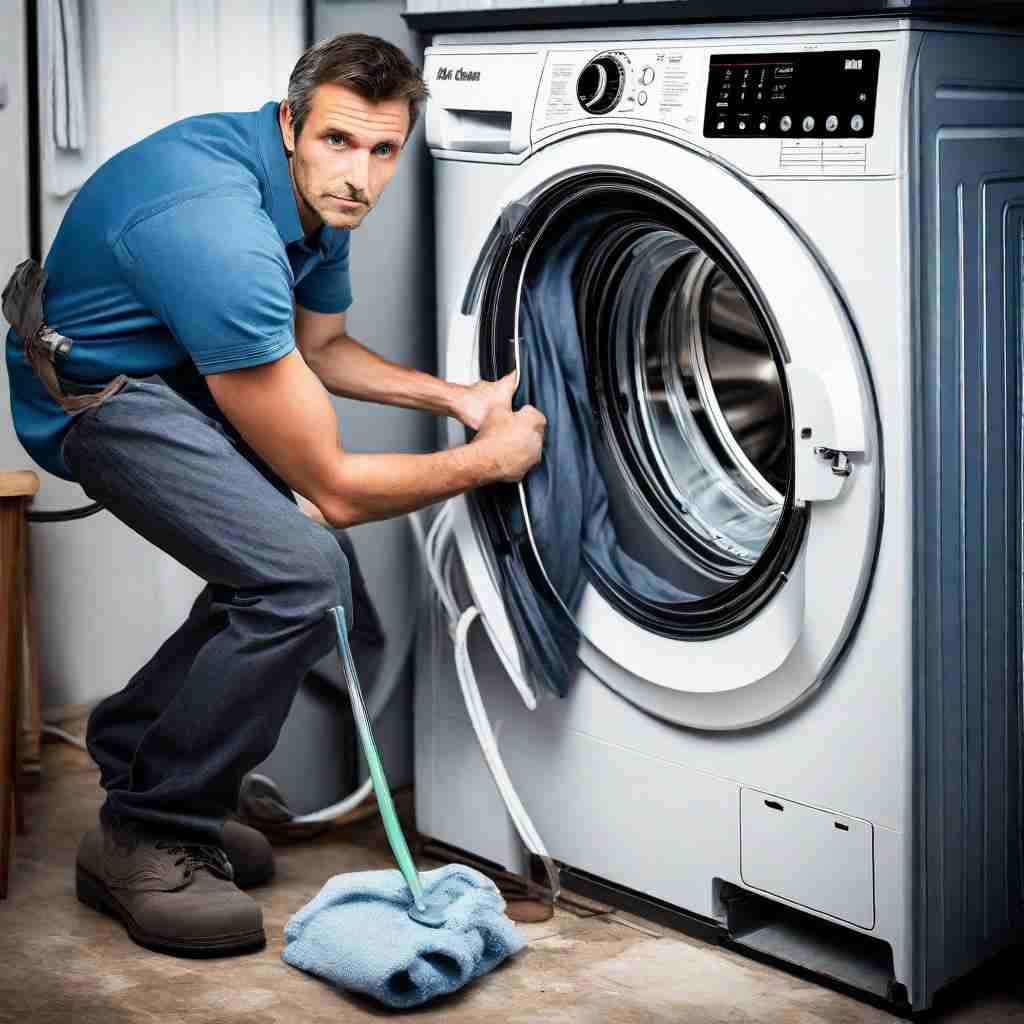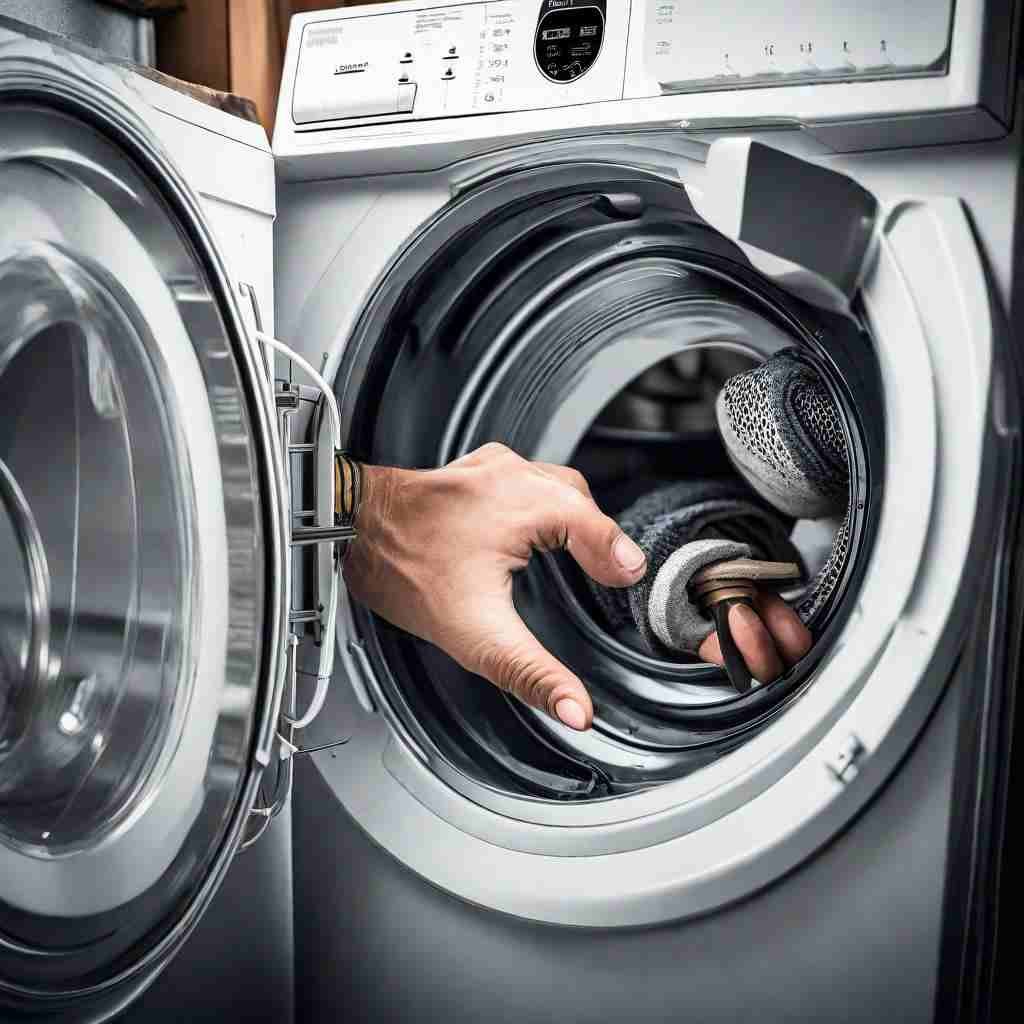how to fix a washing machine that won’t wash
1. Introduction
Brief overview of the common issue: a washing machine that won’t wash.
Importance of a properly functioning washing machine.
2. Understanding the Problem
Identifying the symptoms of a malfunctioning washing machine.
Causes of a washing machine not washing clothes.
3. DIY Troubleshooting
Checking power supply and connections.
Examining the water supply.
Assessing the detergent dispenser and usage.
Inspecting the washing machine drum and agitator.
4. Common Issues and Solutions
Dealing with clogged filters and drain hoses.
Addressing issues with the washing machine pump.
Fixing problems with the agitator and drive belt.
5. Regular Maintenance Tips
Importance of regular cleaning and maintenance.
Suggested maintenance schedule for a washing machine.
6. When to Call a Professional
Recognizing when the issue requires professional assistance.
Tips for choosing a reliable appliance repair service.
7. Cost Considerations
Estimating the potential cost of DIY repairs.
Comparing costs of DIY vs. professional repairs.
8. Preventive Measures
Tips to prevent common washing machine issues.
Best practices for extending the lifespan of your washing machine.
9. Environmentally Friendly Options
Exploring eco-friendly detergents and washing practices.
How a well-maintained washing machine contributes to sustainability.
10. Upgrading Your Washing Machine
Signs it’s time for a new washing machine.
Considerations when purchasing a new washing machine.
11. User Experiences and Success Stories
Sharing real-life stories of individuals fixing their washing machines.
Encouraging readers with relatable examples.
12. Conclusion
Summarizing key points.
Encouraging readers to take action based on the provided information.
how to fix a washing machine that won’t wash: in detail

Introduction
A normal laundry day might become an unpleasant effort due to a malfunctioning washing machine.
Given its importance in keeping our homes tidy and organized, the importance of having a functioning washing machine cannot be emphasized.
In this post, we’ll look at typical problems that lead a washing machine to refuse its main task and walk you through how to remedy it.
Understanding the Problem
Before diving into solutions, it’s crucial to recognize the signs of a washing machine in distress.
If your once-efficient appliance is leaving clothes dirty or sopping wet after a cycle, you’re dealing with a problem that demands attention.
Causes can range from simple issues like power supply disruptions to more complex internal malfunctions.
DIY Troubleshooting
Let’s begin with the fundamentals. Make sure all of the connections are tight and that your washing machine is getting enough power.
A malfunctioning socket or a loose plug may occasionally be the cause. Next, look over the water supply—this is a frequent mistake.
Inadequate water pressure or scarcity of water might make washing difficult. Make sure you’re using the appropriate detergent in the right amount by checking the detergent dispenser and use as well. Finally, check the agitator and drum for any obvious issues.
Common Issues and Solutions
Clogged filters and drain hoses are frequent culprits when it comes to washing machine issues.
In this section, we’ll guide you through the process of unclogging these essential components.
We’ll also address problems with the washing machine pump and provide solutions for issues related to the agitator and drive belt.
Regular Maintenance Tips
Prevention is often the best cure. Regularly cleaning and maintaining your washing machine can help avoid common problems. We’ll outline a simple maintenance schedule to keep your appliance running smoothly for years to come.
When to Call a Professional
While DIY troubleshooting is cost-effective, there are instances where professional assistance is necessary.
We’ll help you recognize when it’s time to call in the experts and provide tips on choosing a reliable appliance repair service.
Cost Considerations
Weighing the costs of DIY repairs against professional services is essential. Sometimes, spending a little more upfront for professional help can save you money and headaches in the long run.
We’ll break down the potential costs involved in both scenarios.
Preventive Measures
In this section, we’ll share practical tips for preventing common washing machine issues.
From proper loading techniques to using the right detergents, these measures can extend the life of your appliance and save you from future headaches.
Environmentally Friendly Options
For the environmentally conscious, we’ll explore eco-friendly detergents and washing practices.
Maintaining a well-functioning washing machine aligns with sustainable living practices, and we’ll explain how.
Upgrading Your Washing Machine
Sometimes, it’s simply time for an upgrade.
We’ll discuss signs that indicate your washing machine is beyond repair and provide considerations when purchasing a new one.
User Experiences and Success Stories
To inspire readers, we’ll share real-life stories of individuals who successfully fixed their washing machines using the tips provided in this article.
These anecdotes will underscore the practicality and effectiveness of the suggested solutions.
Conclusion
In conclusion, a malfunctioning washing machine doesn’t have to be a cause for panic.
By understanding the common issues, following our DIY troubleshooting guide, and considering professional help when needed, you can keep your washing machine running smoothly.
Remember, proactive maintenance and eco-friendly practices can contribute to both a well-functioning appliance and a sustainable lifestyle.
Frequently Asked Questions /Answers
1. How often should I clean my washing machine?
It is advised to clean frequently—at least once a month—to avoid accumulation.
2. Should I get a new washing machine or is it more cost-effective to fix my old one?
It is contingent upon the severity of the problem and the age of the machine you are using. We’ll offer you advice so you can decide wisely.
3. Can using eco-friendly detergents really make a difference?
Yes, not only for the environment but also for the longevity of your washing machine.
4. What are the signs that indicate my washing machine needs professional attention?
We’ll outline specific symptoms that suggest it’s time to call in a repair expert.
5. Where can I find reliable appliance repair services?
– We’ll provide tips on finding trustworthy professionals to fix your washing machine.
Important question answers
Q1:My washing machine is spinning in only one direction what may be the cause and cure of it?

Your washing machine spinning just in one direction could be a sign of several possible problems. The following are some typical reasons and potential fixes:
1.Faulty Motor:
Cause:The motor responsible for the spinning action may be malfunctioning.
Cure:Look through the user handbook to see whether there are any motor-related troubleshooting procedures. Should the motor prove to be malfunctioning, a professional’s repair or replacement may be necessary.
2.Belt Issues:
Cause: A loose or damaged belt can affect the direction of the spin.
Treatment: Examine the belt for any indications of deterioration or misalignment. You may need to replace or adjust the belt if you observe any problems. For instructions on gaining access to and modifying the belt, consult the user handbook.
3.Transmission Problems:
Cause: Issues with the transmission system can impact the spin function.
Cure:Transmission problems may require professional attention. Contact a qualified appliance repair service to diagnose and fix any transmission issues
4. Electronic Control Board Malfunction
Cause:Problems with the electronic control board can disrupt the spinning cycle.
Cure:Check for error codes on the display panel. If the control board is faulty, it might need to be repaired or replaced. Again, consulting the user manual for guidance on troubleshooting electronic components is advisable.
5. Lid Switch Troubles:
Cause: Some washing machines won’t spin if the lid switch is faulty or not engaged properly.
Cure: Ensure that the lid is securely closed during the spin cycle. If the problem persists, check the lid switch for any damage. Replace the switch if necessary.
6. Uneven Load Distribution:
Cause:Unevenly distributed laundry inside the drum can affect the spin cycle.
Cure: Before starting the machine, evenly distribute the clothes inside the drum. An unbalanced load can cause the machine to spin irregularly.
If you’ve checked these common issues and the problem persists, it’s recommended to seek professional help. An experienced technician can diagnose the specific problem with your washing machine and provide an appropriate solution.
Remember to always follow safety guidelines and, if unsure, consult the manufacturer’s instructions or contact customer support.
Q2:I ruined my washing machine control panel. Is it possible to put a different control panel? (don’t necessarily need all the options that it had)?
Absolutely, you can usually swap out the control panel of a washing machine for a new one, especially if you don’t mind giving up certain functionality. Here’s a methodical instruction on how to go about this:
1. Check Compatibility:
– Ensure that the replacement control panel is compatible with your washing machine model. You can find this information in the user manual or by contacting the manufacturer.
2. Purchase a Compatible Control Panel:
Look for a control panel that is designed for your specific washing machine model. You can find replacement parts from the manufacturer, authorized dealers, or reputable appliance parts suppliers.
3. Disconnect the Power:
Before starting any repair or replacement work, always unplug the washing machine from the power source to ensure safety.
4. Access the Control Panel:
To access the control panel, you may need to remove the front or top panel, depending on the model of your washing machine.
See the user manual for details on how to accomplish this.
5. Remove the Old Control Panel:
Carefully disconnect any wires or connectors attached to the control panel.
Take note of the connections or take pictures to help you reconnect everything correctly later. Remove any screws securing the control panel in place.
6. Install the New Control Panel:
Attach the new control panel by securing it with the appropriate screws.
Reconnect the wires and connectors according to the instructions provided with the replacement part or in the user manual.
7. Test the Washing Machine:
Once the new control panel is installed, plug in the washing machine and test it to ensure that the basic functions are working.
Check if the machine responds to different settings on the new control panel.
8. Adjust Settings (if necessary):
If the replacement control panel has fewer options than the original, you might need to adjust settings accordingly.
Some features may not be available with the new panel, but the essential functions should still work.
9. Seek Professional Help (if needed):
If you’re uncomfortable or unsure about the replacement process, consider seeking professional help. Appliance repair technicians have the expertise to handle such replacements safely.
Recall that even though control panels are frequently replaceable, it’s essential to make sure they work properly and follow installation guidelines to prevent additional harm.
If you’re not sure or your washing machine is still covered by warranty, you should get advice from the manufacturer or a qualified technician.
how to fix a washing machine that won’t drain.

Introduction
Imagine this scenario: your washing machine won’t drain, so as you anxiously await the completion of your laundry, you find a pool of water in the drum. Yes, it is frustrating. We’ll look at the typical reasons of this problem in this tutorial and provide you with workable fixes to get your washing machine working again.
Identifying the Problem
When your washing machine starts acting up, strange noises or vibrations during the cycle and visible water pooling in the drum afterward are clear indicators that something’samiss.
Possible Causes
1.Clogged Drain Hose
A blocked hose can impede water drainage. Fear not – learn how to troubleshoot and unclog it with simple DIY solutions.
2.Faulty Pump
Recognize signs of a malfunctioning pump and discover tips for checking and replacing it yourself.
3.Blockage in the Drain Filter
The drain filter is often overlooked. Uncover steps to locate and clean it for improved drainage.
DIY Fixes
1.Unclogging the Drain Hose
A step-by-step guide to freeing your drain hose from obstructions.
2.Checking and Replacing the Pump
Essential tips for ensuring your pump is in working order or replacing it if necessary.
3.Cleaning the Drain Filter
Discover the ease of maintaining your drain filter to prevent future issues.
Professional Assistance
Occasionally, a polished touch is required. Recognize when it’s time to hire professionals for a comprehensive examination and maintenance.
Preventive Measures
The secret is to maintain things regularly. Discover the best ways to avoid drainage issues and maintain the best possible condition for your washing machine.

Common Mistakes Avoid you
1.Overloading the Washing Machine
Understand the impact of overloading on drainage and take steps to avoid it.
2.Neglecting Routine Maintenance
Your washing machine will appreciate you for doing routine maintenance.
3.Solutions for Eco-Friendly Drain Cleaning
Investigate greener, more natural options for keeping your drainage system clear and functioning well.
When you replace Washing Machine
It’s important to know when to say goodbye. Make an informed choice by identifying the warning indications that your washing machine might not be able to be repaired.
Conslustion
For a washing machine to last and function well, it must be fixed when the drain stops working. You will have the skills necessary to troubleshoot, repair common problems, and maintain a well-functioning washing machine if you follow our tutorial.


1 thought on “how to fix a washing machine that won’t wash”